Rapporti ISTISAN 09/49 ISTITUTO SUPERIORE DI SANITÀ Ageing ...
Rapporti ISTISAN 09/49 ISTITUTO SUPERIORE DI SANITÀ Ageing ...
Rapporti ISTISAN 09/49 ISTITUTO SUPERIORE DI SANITÀ Ageing ...
Create successful ePaper yourself
Turn your PDF publications into a flip-book with our unique Google optimized e-Paper software.
<strong>Rapporti</strong> <strong>ISTISAN</strong> <strong>09</strong>/<strong>49</strong><br />
to the entrance of people in the stage of the old age require: a) the necessity of redefining one’s<br />
own marital relationships, as privileged love relationship; b) the consideration of one’s own<br />
personal identity in relation to one’s social-family role and the mastery become passive after it<br />
had been active before ageing. According to the theory of engagement and activity, retirement<br />
from work represents a risk factor, if there is no compensation with other activities or interests.<br />
The theory of the role on the contrary postulates that risk factors are linked to the loss of social<br />
role and to the adoption of stereotyped roles. According to these theories, the coping strategies<br />
which better adapt themselves to a better old age (Fonzi, 2008) are those linked to the<br />
possibility of escaping automatisms, and those that implement situations in which a flexible<br />
thought is developed. Once again there is the participation into a social and productive life<br />
which allows the cultivation of educational and cultural interests and the participation into the<br />
life of one’s own community. The possibility of being creative in some cases helps the<br />
emergence of a new self-consciousness, a better self-evaluation and a more positive attitude<br />
towards problems and the future (Cesa-Bianchi & Antonietti, 2003).<br />
2.16.2. Resources<br />
Some factors of protection for the active ageing are introduced (e.g. physical activity,<br />
volunteer service, social relationships, family relationships, etc.) in the following paragraphs.<br />
2.16.2.1. Physical activity<br />
The literature in this field shows a long list of positive effects that the participation into<br />
regular physical activities has on physical health. If we consider the psychological sphere,<br />
physical activity has an influence at a cognitive level and on the mood, as regards the social<br />
aspects, a social and cultural integration can be noticed, as well as the making of new<br />
friendships and the possibility of intergeneration exchanges. Physical activity positively relates<br />
to cognitive efficiency, with the levels of fluid intelligence and with memory (Lochbaum et al.,<br />
2002; Fratiglioni et al., 2004; Podewils & Guallar, 2006; Kramer et al., 2006; Sing-Manoux et<br />
al., 2005). Vance (Vance et al. 2005) suggests the hypothesis that physical activity positively<br />
influences cognitive activity through the increase of social contacts, which would have a<br />
stimulating effect on the brain and reduce depression. In the field of health psychology, different<br />
theoretical approaches have been developed to explain the variables influencing the adoption of<br />
behaviours promoting health and preventing diseases. On identifying variables which define<br />
health behaviours in the elderly, many studies have used physical activity as starting point for a<br />
better understanding of the complexity of this subject. The participation of the elderly into<br />
physical activity is described below from the point of view of different theories. According to<br />
the level of analysis adopted, the involvement into healthy activities like sports is explained by<br />
different variables. For adopting healthy behaviours and participating into physical exercise<br />
programmes decisive factors are: generalised self-efficiency, health locus of control, and<br />
optimism. According to the social-cognitive theory of Bandura (Bandura, 1996), our behaviour<br />
is influenced by the perceived self-efficiency, result expectations and personal objectives. In the<br />
behaviours identified as fundamental for health, the first two aspects result to be crucial;<br />
expectations are important above all in the stage of formulating intentions. Generalised selfefficiency<br />
mediates the stress effects on wellbeing (Lightsey, 1996) and has got a role in<br />
keeping the mood at good levels. A positive relation exists between the idea of self-efficiency<br />
and the participation into physical and social activities (Perkins et al., 2008). Generalized selfefficiency<br />
however determines the degree of care the elderly take of their health. This theory<br />
shows that people adopt proactive behaviours of protection and promotion of health.<br />
26



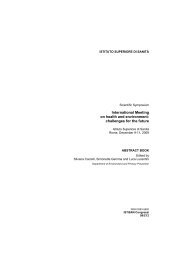
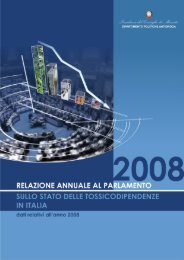
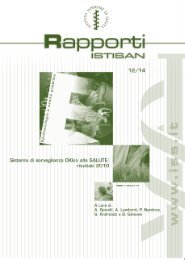
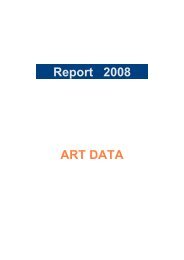
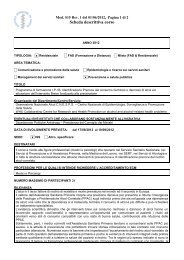
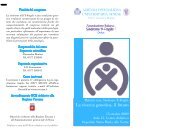
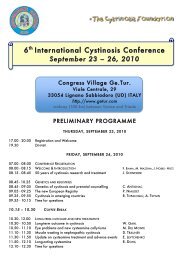
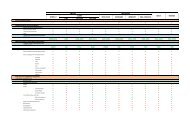
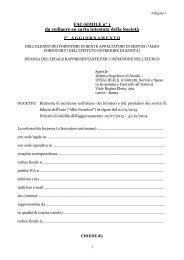
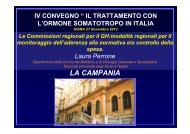
![Emilia Romagna [PDF - 175.10 kbytes]](https://img.yumpu.com/23556597/1/184x260/emilia-romagna-pdf-17510-kbytes.jpg?quality=85)
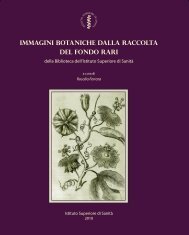
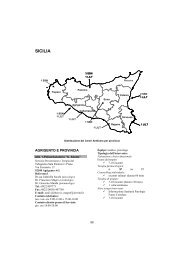
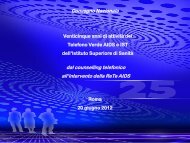
![Istisan Congressi N. 66 (Pag. 1 - 81). [PDF - 2021.12 kbytes] - Istituto ...](https://img.yumpu.com/23556493/1/171x260/istisan-congressi-n-66-pag-1-81-pdf-202112-kbytes-istituto-.jpg?quality=85)